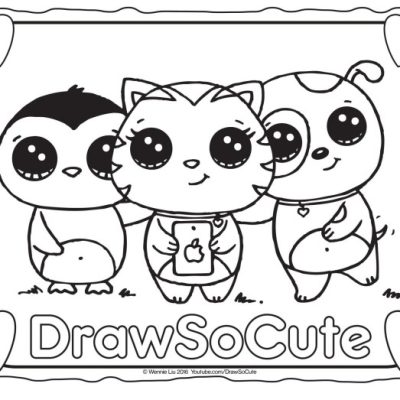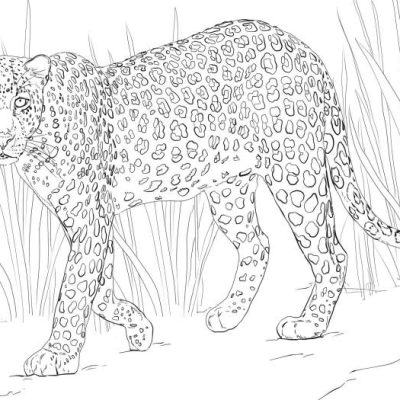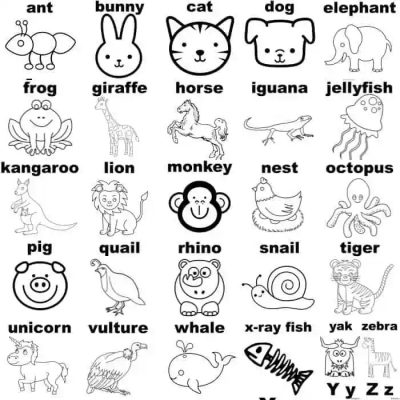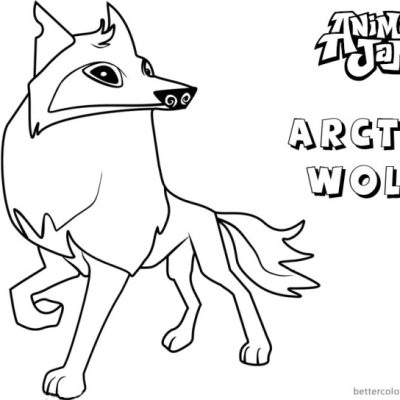Coloring Pages Toddler Animal Boosting Development
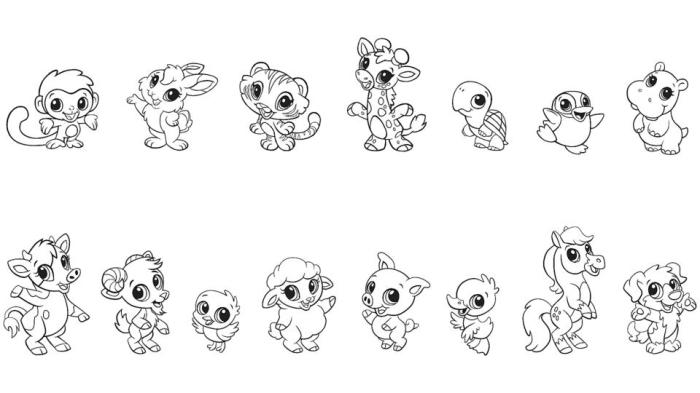
Creating Engaging Animal Illustrations for Toddlers

Coloring pages toddler animal – Creating captivating coloring pages for toddlers requires a keen understanding of their developmental stage and visual preferences. Simple, bold designs are key, avoiding intricate details that might frustrate young artists. The goal is to create illustrations that are both fun to color and visually stimulating, encouraging creativity and fine motor skill development. This involves careful consideration of animal features, movement, and overall aesthetic appeal.Simple, Appealing Animal Illustrations for ToddlersToddlers are drawn to clear shapes and bright colors.
Illustrations should feature large, easily identifiable animal forms with minimal details. Think of bold Artikels and large, uncluttered spaces for coloring. Avoid small, fiddly elements that are difficult for little hands to manage. For example, a cat could be represented by a simple oval body, two circles for ears, and triangular shapes for the legs and tail. Similarly, a dog could be a slightly longer oval with four stumpy legs and a wagging tail.
The focus should be on the overall shape and recognizable features, not minute details.Creating a Sense of Movement and Expression in Animal IllustrationsAdding a sense of movement or expression can significantly enhance the appeal of the illustrations without adding complexity. This can be achieved through simple techniques. For instance, a slightly tilted head can suggest curiosity, while outstretched paws can convey playfulness.
A bird with slightly curved wings can suggest flight. These small additions bring the animals to life without overwhelming the design with intricate details. The use of dynamic lines, even simple ones, can also help. A slightly curved line for the body of a cat can suggest a playful pounce.Examples of Animal Illustrations for Toddler Coloring PagesHere are five animals with descriptions suitable for toddler coloring pages:
- Elephant: A large, oval body with two smaller oval ears, four short, thick legs, and a long, curved trunk. The tail can be a short, thin line. Keep the features simple and avoid detailed wrinkles or textures.
- Giraffe: A long, slender neck and body. Simplify the spots to large, easily colorable circles or ovals. The legs should be long and thin, and the head should be small with large, simple ears.
- Lion: A large, round body with a short, fluffy tail. The mane can be represented by a simple, thick circle around the head. The face should have large, round eyes and a simple, triangular nose.
- Butterfly: Two large, overlapping wings with simple, symmetrical patterns. The body can be a long, thin oval with small antennae. Avoid intricate wing details; stick to large, bold shapes.
- Fish: An oval body with a simple tail fin and two smaller fins on the sides. Add a simple eye and a slightly open mouth. Avoid scales or other detailed features.
Simplifying Complex Animal FeaturesComplex animal features, such as a giraffe’s spots or a zebra’s stripes, can be simplified for easy coloring. Instead of individual spots or stripes, consider using large, solid patches of color. For the giraffe, use large, rounded spots; for the zebra, use broad stripes. This approach makes the illustrations more accessible for toddlers while still maintaining the animal’s recognizable characteristics.
The key is to capture the essence of the pattern, not its precise detail. Think about using contrasting colors to make the simplified patterns stand out.
Practical Applications and Resources: Coloring Pages Toddler Animal

Toddler animal coloring pages offer a surprisingly versatile tool for parents, educators, and caregivers. Beyond simple entertainment, these pages can be integrated into various aspects of a child’s development, fostering creativity, learning, and even positive behavior. Let’s explore the diverse ways these seemingly simple sheets can be utilized.
The versatility of animal coloring pages extends far beyond mere playtime. They provide opportunities for quiet, focused activities, rewarding good behavior, and even enhancing educational experiences. By incorporating them strategically, you can create engaging and enriching experiences for young children.
Ways to Use Animal Coloring Pages
Animal coloring pages can be effectively incorporated into daily routines and learning activities. For example, they serve as an excellent quiet time activity, allowing toddlers to express their creativity while calming down after a period of high energy. They can also function as a reward system, providing a fun and engaging activity for completing chores or demonstrating good behavior.
Furthermore, coloring pages can be used as an educational tool, helping children learn about different animals, their habitats, and their sounds. Imagine a child coloring a lion, then using finger puppets to make roaring sounds, or coloring a polar bear and discussing its icy habitat. These activities stimulate imagination and build foundational knowledge.
Incorporating Coloring Pages into Themed Learning Activities, Coloring pages toddler animal
Thematic learning significantly enhances the engagement and retention of information. Animal coloring pages are perfectly suited for integration into themed activities. For example, a “jungle animals” theme could include coloring pages of monkeys, parrots, and tigers, accompanied by jungle sound effects and discussions about the rainforest environment. A “farm animals” theme might involve coloring cows, pigs, and sheep, alongside a visit to a nearby petting zoo or reading farm-themed books.
The possibilities are endless and can be tailored to the child’s interests and developmental stage. Remember to focus on interactive elements, such as animal sound imitations or creating miniature habitats using craft materials.
Resources for Finding Free Printable Coloring Pages
Finding free printable toddler animal coloring pages is easier than ever. Numerous websites and resources offer a vast selection of designs.
Access to a wide range of free printable animal coloring pages is crucial for making these activities readily available. This accessibility ensures that everyone can benefit from the educational and developmental advantages of coloring.
- Many websites dedicated to printable coloring pages offer free toddler animal sections. A simple search on Google or other search engines will yield numerous results.
- Educational websites often include free printable resources, including animal coloring pages, as part of their learning materials.
- Some online retailers offer free printable coloring pages as a promotional tool.
- Pinterest is a treasure trove of printable coloring pages, many of which are free and specifically designed for toddlers.
Creating a Simple Printable Coloring Page
Creating your own coloring page is a surprisingly simple process, requiring only basic software and a little creativity. Many free or low-cost programs, such as Microsoft Paint or free online drawing tools, are sufficient. Start by sketching a simple animal Artikel – a cat, dog, or even a friendly monster. Once you have your Artikel, you can add simple details like eyes, a nose, and mouth.
Remember to keep the lines thick enough for small hands to easily color within. Finally, save your creation as a high-resolution image file (like a JPEG or PNG) and print it out. You can also add simple textures or patterns to make it more visually appealing. Remember to avoid overly complex designs that might frustrate a toddler.
Toddler animal coloring pages are fantastic for developing fine motor skills and sparking creativity. They’re a great stepping stone to more complex projects, and when your little one’s ready for something a bit more involved, you might consider a full-fledged coloring book like the one found here: coloring book animals fo rkids. But don’t forget, those simple animal coloring pages remain a wonderful way to keep toddlers entertained and engaged!


